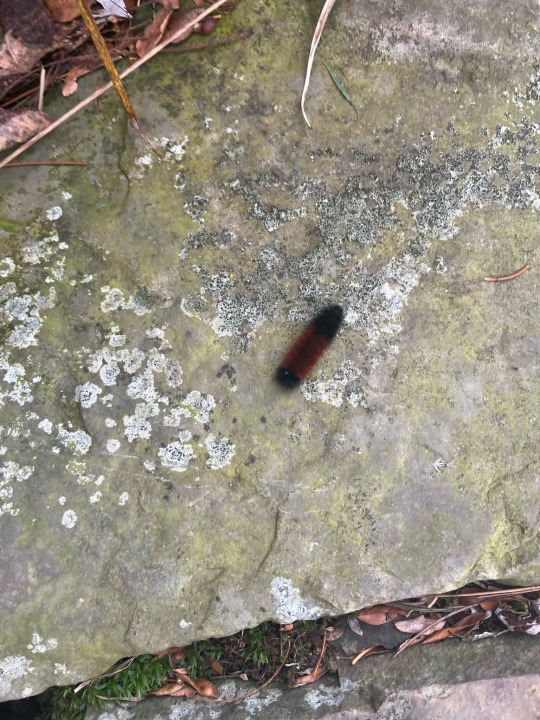#woolly worm
Explore tagged Tumblr posts
Text

I LOVE BUGS!!
#bugs#stamp#f2u graphics#f2u with credit#bug#spider#ladybug#wooly worm#woolly bear caterpillar#woolly worm#wooly bear#stamps#web graphics#web stamps#web resource#webcore#web design#2000s#2000s nostalgia#y2k
13 notes
·
View notes
Text













Pyrrharctia isabella, better known as the Isabella tiger moth, whose larval form is called the banded woolly bear, woolly bear, hedgehog caterpillar, or woolly worm, is a species of moth that occurs in the United States and southern Canada. The isabella tiger moth can be found in many cold and temperate regions. The banded woolly bear larva emerges from the egg in the fall and overwinters in its caterpillar form, by allowing most of its mass to freeze solid. First its heart stops beating, then its gut freezes, then its blood, followed by the rest of the body. It survives being frozen by producing a cryoprotectant in its tissues. In the spring, it thaws. They are generalist feeders, consuming many plant species, including herbs and trees. Reaching around 1.75 to 2.25 inches (4.44 to 5.72cms) in length, Adult Isabella tiger moths usually rest with the wings held rooflike over their bodies, or else held flat out to the sides. The forewings are yellow or tan, pointed, and often have faint lines and small dark spots. Hindwings are lighter and are orange in females. The bases of the forelegs are reddish orange. As woolly bear caterpillars they are fuzzy with dense, stiff hairs. They are usually black on the ends of the body and rusty red or brownish in the middle. When disturbed, they commonly roll up in a ball. Note that touching the bristles can cause dermatitis in some people. Adults fly about during spring and summer, mating multiple times with multiple partners. Despite being capable of surviving up to 14 years as a caterpillar, the Isabella tiger moth will only spend less than a year of its life as a moth.
#pleistocene pride#pliestocene pride#isabella tiger moth#moth#woolly bear caterpillar#woolly worm#hedgehog caterpillar#caterpillar#bug#bugs#insect#animal#facts#animal facts
13 notes
·
View notes
Text

looks like some pretty intense weather in the coming week for WNY! maybe this little friend is onto something…
do you know the lore regarding woolly bear caterpillars? it’s said that they can predict how the approaching winter will be. using our friend here as an example, the black starting at the head (pointing upwards in the photo) predicts a harsh start; however, the long brown middle is indicative of milder months to follow.
suffice it to say that i am going to grab lots of hot chocolate, ingredients to make soup with, and maybe even a new book or two- recommendations welcome!
#witchblr#baby witch#green witch#cottagecore#witchcore#magick#nature#witch community#witches of tumblr#witchy#witchcraft#folklore#folk magic#caterpillar#woolly bear#woolly worm#old wives tale#fall#autumn#winter#snow#western new york#new england#lake erie#education#bookblr
29 notes
·
View notes
Text

12 notes
·
View notes
Text

Pyrrharctia isabella (woolly bear caterpillar)
Photo by J.R. Baker, NC State University
#caterpillar#bugs#insects#fluff#I wanna pet it but poisonous.. I might risk it anyway if I saw one#nature#isabella tiger moth#moth larva#fuzzy#creatures#orange and black#woolly worm#orange#leaf#green#cute#J.R. baker#science#woolly bear#woolly bear caterpillar
12 notes
·
View notes
Text


4 notes
·
View notes
Text


Release day for the woolly bears I’ve been raising 🐻🐛
#woolly bear caterpillar#mine#caterpillar#raising moths#raising caterpillars#woolly worm#isabella tiger moth#appalachia#entomology#bugs
0 notes
Text
Woolly Worm
The classic Wooly Worm is a fly whose history goes back centuries. It has been a long-time favorite warm water pattern for bass and panfish. This versatile fly can be fished like a nymph, wet fly or streamer. Tied in smaller sizes, bluegills, and other panfish can’t resist them.
Three (3) Flies!
These Wooly Worms are weighted and tied on premium barbless hooks.
Minimum order size is three (3) flies of the same size and color
0 notes
Text

If you like cute accessories, decor, and handmade crafts check out my shop! 🧡















#artists on tumblr#small business#acrylic charms#polymer clay#handmade#risograph#x files#aliens#kidcore#frutiger aero#fish#vaporwave#raccoons#mouse#mice#sardines#fruit#strawberry#bunnies#rabbits#autumn#inch the worm#beanie babies#woolly bears#pixel art#hamsters#sea bunnies#bunny slug
330 notes
·
View notes
Text

the last leaf
#fall#autumn#cottagecore#aesthetic#worm#woolly bear caterpillar#caterpillar#october#art#digital art#my art#cozy#cozycore
15 notes
·
View notes
Text

The worm in RFK Jr's brain is actually a rather typical feature of third party voters.
#rfk jr#worm in brain of rfk jr.#third parties#people who vote for third parties have woolly caterpillars in their brains#the only way to prevent fascism is to vote democratic#“protest votes” are electoral self-indulgence#the electoral college#ruben bolling#tom the dancing bug#ken fisher#election 2024#vote blue no matter who
14 notes
·
View notes
Text

Silly bug
11 notes
·
View notes
Text

Inktober 52 2023 - Week 31 - ‘Teeth’
A Wooley rhino battle sister for @scifer barbarian horse lady Viktoria.
Her name is Bryn and her favourite battle trophy is TEETH.
BONUS:
WORM TEETH WORM TEETH WORM TEETH *rhythmically slams fists on desk*

#inktober52#inktober#inktober 52#worm#creature#monster#grinning worm#anthro#Woolly rhino#rhino#teeth#fangs
16 notes
·
View notes
Text
im trying to think outside the feathers/skin/scales/fur box for my specbio world so now my sophonts have mucus-y wet oxygen-absorbing skin like salamanders and there's also a bunch of elephant-sized critters that excrete a waxy substance that builds up into armor like butternut woolly worms
#thalia#thalians#spec bio#i know woolly worm wool isn't armor it just sucks to bite#my thinking was that originally it would be for that and then as the species got bigger and went from a small herbivore niche to#a megafauna herbivore niche it would adapt the wax to function as armor (vs predators parasites thorns etc)#they also have a big wax pad on their snout that they use to push down vegetation to eat#and it helps trap water next to their skin#(since thalia has extreme tidal flooding the majority of animal species are amphibious)
1 note
·
View note
Text

Woolly bear caterpillars
0 notes
Text
Getting ready to leave the house until you realize it's Friday the 13th. 👋🏼 #nevermind
Pompeii worms (Alvinella pompejana) make their homes at the top of hydrothermal vent “chimneys,” where superheated water belches from within the Earth’s crust, delivering a rain of mineral “ash.” Here, large numbers of worms live side by side, each darting in and out of their paper-thin tubes while waving pointy, rust-colored gills.
Pompeii worms build their tubes directly on the rocky vent chimneys. The base of these dwellings can experience temperatures up to 105 degrees Celsius (221 degrees Fahrenheit), and the inside of the tube isn’t much cooler either.
What’s the secret to surviving such scalding temperatures? The woolly worm scuttles back and forth between the hot water rich in nutrients and the cool water rich in oxygen—a movement that also mixes cool water into the tube. But more importantly, a fleece-like layer of bacteria helps insulate the Pompeii worm from the extreme heat.
On their own, Pompeii worms can only tolerate temperatures up to 55 degrees Celsius (131 degrees Fahrenheit), but their bacterial coating redistributes the heat to keep the worms cool. The bacteria not only help regulate the worm's temperature but also break down minerals from the vent to aid their host.
500 notes
·
View notes